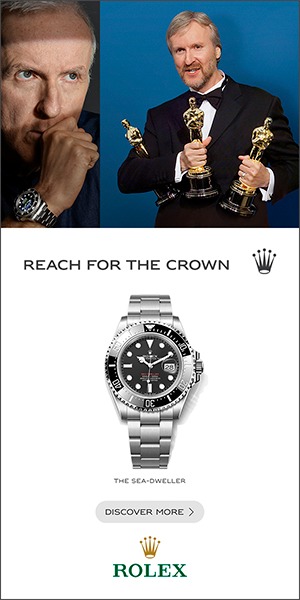Most couture collections aim to cover and expose the flesh to convey a deep-rooted message artistically. Bored. Next. Now tell me about the ones that undress the soul. Yes Mr. Mishra, we know you're the man. His latest couture presentation, 'Becoming Love,' falls firmly in the latter. Rich in metaphor, memory, and meticulous craftsmanship, the collection was concieved in the quiet shadow of personal loss, whilst building onto the traces love, as seen through seven emotional stages. He's quite the poet.
In a conversation with ELLE India, he speaks of surrender and rhythm of love not just as a linear story, but as an ongoing state of becoming. Thus, the name. And it's safe to conclude, this collection with Tanishq as the jewellery partner emerges as his most personal and profound offering, yet. Keep reading to know why.
/filters:format(webp)/elle-india/media/media_files/2025/07/07/rahul-mishra-gold-2025-07-07-17-29-29.png)
ELLE: Tell us about the inspiration behind your upcoming collection, ‘Becoming Love’.
Rahul Mishra (RM): The collection is deeply tied to the theme of love, exploring how it manifests in different stages and forms. It’s a personal journey, especially after the loss of my father last season. Grief, I believe, is love persisting. ‘Becoming Love’ delves into seven stages of love—ranging from attraction to death—and draws from various sources like Sufism and classical art, including the works of Gustav Klimt. These stages aren’t just human; they transcend all living beings. Each stage represents an emotion, an essence that’s tangible yet abstract. It’s been one of the most challenging collections I’ve worked on, almost like crafting seven different collections within one.
ELLE: Can you break down the seven stages of love and how they are represented in the collection?
RM: Sure! The journey begins with attraction, which I see as the first bloom of a flower. Sufi mysticism calls this Dilkashi. Then comes infatuation: Ulst, a feverish rush, represented by pointillistic floral embroidery. The third stage is love, Ishq—when the seed finally takes root and transforms. This leads to reverence, or Aqeedat, where love becomes a deeper trust and reverence, inspired by Klimt’s depiction of sacred feminine energy. We move into worship Ibadat, where love transcends the physical, like the love between Lord Krishna and his devotees. The fifth stage is obsession, or Junun, which is where love turns intense, almost obsessive. Lastly, death, or Maut, is not an end, but a transformation. Love becomes a memory, a lingering feeling that persists.
/filters:format(webp)/elle-india/media/media_files/2025/07/07/rahul-mishra-zoom-in-2025-07-07-16-52-38.png)
ELLE: How did you approach the challenge of translating such abstract emotions into tangible designs?
RM: It was incredibly difficult to put these emotions into fabric, but we used symbols, like the heart, which keeps appearing throughout the collection. I wanted to express the rhythm of love—like a heartbeat. Some pieces feature sculptural elements to mimic the shape of a heart, while others explore floral motifs as symbols of love’s ephemeral nature. I also referenced Klimt’s works, using the weight of gold and black to represent obsession and passion, and the more delicate, ethereal elements for love and reverence.
ELLE: What’s the role of colour in this collection?
RM: Colour is very deliberate. We’ve moved away from the more restrained black-and-gold palette of last season to introduce vivid florals, golds, and whites. There’s a lot of clarity in the use of white, which ties back to the purity of love. But it’s not just about bold colours; it’s about creating an emotional palette. Each hue corresponds to a stage. infatuation’s feverish reds, love’s tender pinks, obsession’s deep blacks. There’s a visual rhythm to it, just like love itself.
/filters:format(webp)/elle-india/media/media_files/2025/07/07/rahul-mishra-abc-2025-07-07-16-52-17.png)
ELLE: Paris is synonymous with high fashion. Why do you keep returning to Paris Haute Couture Week?
RM: It’s a ritual, really. After so many years, it’s not just about the fashion, but about the team, the energy, and the discipline it takes to put everything together. This season marks our 11th year in Paris. It’s about consistency and showing up, even when it’s difficult. We’ve faced our share of challenges, but it’s the process of creation that keeps me coming back. I could easily relax, but there’s something about this challenge that drives me, both personally and professionally.
ELLE: If this collection had a heartbeat, would it be steady or racing?
RM: I’d say rhythmic, in the way nature operates. There’s no rush in love. It’s about finding a consistent rhythm, much like the consistency in our craft. Whether it’s the daily act of creating or the metaphorical heartbeat of love, it’s all about a steady, reliable pulse. Love has its intense moments, but at its core, it’s about rhythm and consistency.
/filters:format(webp)/elle-india/media/media_files/2025/07/07/rahul-mishra-bw-2025-07-07-17-29-49.png)
ELLE: To wrap up, can you talk about how love and obsession are intertwined in your collection?
RM: Obsession is part of the human experience. Love can become all-consuming, but in that, it also transforms us. It’s not just about two people; it can be about a purpose, a passion, a cause. We see this in history, whether it’s a scientist obsessed with discovery or someone pursuing a lifelong dream. It’s a driving force that makes us push boundaries. Obsession isn’t negative; it’s just part of the emotional spectrum that love exists within.
Images by Ritik Jain (for Rahul Mishra)
/elle-india/media/media_files/2025/12/20/bespoke-1280x720_static_2025__james-cameron_jpg-2025-12-20-11-52-00.jpg)
/elle-india/media/agency_attachments/2024/12/12/2024-12-12t050944592z-2024-11-18t092336231z-czebsydrcd4dzd67f1wr.webp)
/elle-india/media/agency_attachments/2024/12/12/2024-12-12t050944592z-2024-11-18t092336231z-czebsydrcd4dzd67f1wr.webp)
/elle-india/media/media_files/2025/12/20/untitled-1-1-2025-12-20-12-04-20.png)
/elle-india/media/media_files/2025/07/07/rahul-mishra-pfw-2025-07-07-16-49-36.png)
/elle-india/media/media_files/2025/12/18/arts-and-culture_marayacouple_en_static_display_300x250-2025-12-18-11-05-09.jpg)
